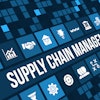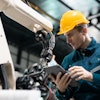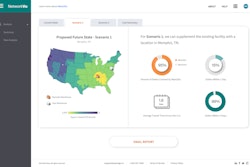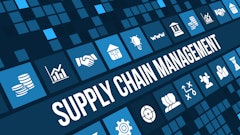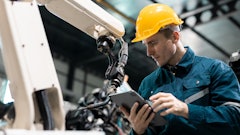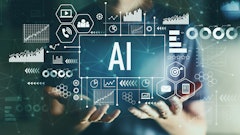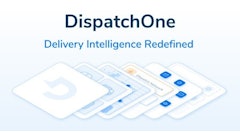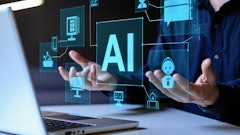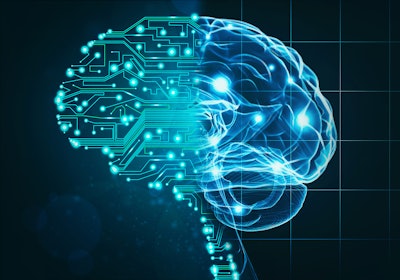
Who would have imagined that in 2021, you could tell a smart device to purchase items that would arrive at your doorstep 45 minutes later without using a physical form of payment? This convenient advancement in technology shows how the supply chain has shifted from a mostly physical movement of goods to a blended arrangement among orders, payment and delivery models—all focused on customer experience.
In 2016, McKinsey & Company published a forward-looking article on Supply Chain 4.0 that listed the Internet of Things (IoT), automation, advanced analytics, big data and robotics as change agents for the new way of conducting business. These technologies would focus on customer convenience, increased visibility, more efficient processes, predictive analytics and cost reduction.
Fast forward to 2021, when the pandemic battered the supply chain and reframed product availability and home delivery—all powered by e-commerce and digital transactions. While countries went into lockdown, many consumers turned to product delivery services that offered instant digital transactions and same-day delivery. This convenience and speed have become the new normal. There are three main technical components that made this capability possible and hold the keys to the future -- integration, analytics and automation. Here’s how their role is changing the landscape of customer experience.
Integration
In a modern context, integration stands for digital connectivity and data flow, the information that passes between all participants and varied points of connectivity in a supply chain and drives transactions. These data points have expanded to include sensors and devices not previously part of the integration landscape. Enter application programming interfaces (API) and their positive impact on the movement of data and increased speed and availability of data. APIs are slowly replacing the sending of files and dismantling the linear data flow. Data platforms and services coupled with the extended cell and Wi-Fi networks and 5G have opened the data aperture from the typical business transaction integrations to a nearly constant synaptic type “sense and respond” network of data elements and communication. The profile of integration traffic has subsequently shifted from a predominately batch and file construct to a stream feed by a dynamic set of data sources and end points. The logical construct supporting this phenomenon is data-as-a-service (DaaS), a single point of interaction that then serves up the data that users and applications require. DaaS, powered by APIs, has generated new levels of speed; efficiency and inherit data governance; as well as access authorization and improved the engine of rapid response, that subsequently improved the customer experience.
Analytics
The old saying paraphrased as “information that doesn’t drive an action is not worth capturing” is now greatly enhanced and empowered with the new dynamic flow of data and its synergies with artificial intelligence (AI) and analytics. Organizations have more information available, which creates an onus to convert that data into action. Analytics with AI provide the “what does it mean” to data and has extended data’s relevance beyond metrics and KPIs and into the realm of automated decision making and customer sentiment.
In the past, a truckload of goods was not tracked as late until it did not arrive on time. Now, data inputs from weather and traffic conditions, combined with machine learning, can proactively flag the delay and dynamically reroute the shipment. This type of predictive analytics provides a more accurate revision of an expected outcome and as such has helped steadily move the use of these models into the realm of day-to-day operations. Data is no longer a flat representation of a status or fact, but a trigger for analysis and the output of an action plan and newly calculated predicted outcome. Not only does this improve the on-time arrival of packages, but it gives customers a more reliable arrival time and an active tracking method similar to when waiting for a rideshare and watching its progress in real time.
Analytics are much more than operational enablers because they increasingly seek to know the consumer’s mind. Third-party data feeds on demographics. Social media sentiment and consumer preferences are now used to drive forecasts, allocation planning and inventory optimization. This improves the probability that when a customer wants something, it will be available in inventory or on the shelf.
Automation
The scope of automation has moved from the factory floor and machines into system processes and workflow. Physical automation within distribution centers and factories continues to show a slow steady rise in adoption of robots and self-guided vehicles. Computer vision (CV) and augmented reality system automation have use cases in plant safety and maintenance and quality control. Robotic process automation (RPA) tends to the workflow side of equation and starts with reducing the human data entry and memory type tasks; and advances to automating re-order trigger events and other actions that have required human intervention in the past.
The progress of automation is directly linked to the advanced capabilities of a data-driven organization and the adoption of AI, so that a dynamically served-up data set can feed an algorithm in real time and interconnect with people, applications, and machines. The interoperability frontier has expanded outside the usual constraint of an operational silo and into a more flattened enterprise ecosystem. Planning, execution, and analytics layers all are beginning to move and respond as a single organism that will push automation toward the promise of full autonomy. The march toward the cognitive or sentient enterprise is marked by the incremental progress of automation.
What’s next for consumers
Supply Chain 4.0 demands a change from business at the speed of data to data at the speed of business. We have moved into a new era of customer experience driven by data and technology. To paraphrase Winston Churchill, it “is the end of the beginning,” meaning we have made significant progress in creating a consumer-centric future that will continue to improve as technology evolves to meet consumer needs. As companies compete for consumer attention and business, technology is making it easier to add personal touches by being able to guess what someone wants before they know they want it. The industry is forever dedicated to the persona-based perspective of solution design, knowing that one bad experience can lead to a flood of social media disdain and brand degradation.
The product is no longer an island unto itself. How you get the product matters, and that puts the supply chain front and center. The solution is framed by fast, effective data coupled with personalized, quick delivery. As sensors, monitors and smart devices proliferate and robust data sets are matched with machine learning and AI, we will move further inside the consumer’s mind to meet their needs and desires.


